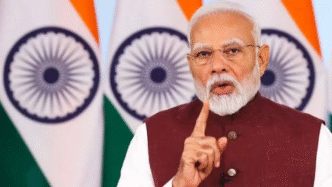As tensions between India and Pakistan intensify following Operation Sindoor and Pakistan’s retaliatory drone and missile attacks, a flood of misinformation is spreading across social media, aiming to sow confusion and panic. The Indian government’s Press Information Bureau (PIB) Fact Check unit has been actively countering these false narratives, urging citizens to rely solely on official sources for accurate updates. Here’s a look at the fake news circulating online, the truth behind these claims, and why sticking to verified information is crucial during this crisis.
Since the night of May 8–9, 2025, when Pakistan launched drone attacks across 26 Indian locations, including Jammu, Ferozepur, and Jaisalmer, social media has been rife with fabricated stories. These range from exaggerated claims of Pakistani military victories to recycled videos and images from unrelated events. The PIB Fact Check unit has identified and debunked numerous instances of misinformation, exposing a coordinated effort, largely from Pakistan-based accounts, to distort the narrative around the conflict sparked by India’s strikes on terror camps after the April 22 Pahalgam attack.
Below are two frequently asked questions about the misinformation campaign, along with clear answers to help navigate the digital chaos.
FAQ 1: What are some examples of fake news being spread about the India-Pakistan conflict, and how has the government debunked them?
The PIB Fact Check unit has flagged several false claims circulating on social media, many of which use outdated or unrelated visuals to mislead the public. Here are key examples:
- Fake Advisory on Location Services: A viral image claimed the Indian government issued an advisory to turn off phone location services immediately. PIB clarified no such advisory exists.
- Beirut Explosion Misrepresented: A video alleging a Pakistani missile attack on India was actually footage from the 2020 Beirut port explosion in Lebanon.
- Jalandhar Drone Strike Hoax: A video claiming a drone strike in Jalandhar was debunked as footage of a farm fire, unrelated to the conflict.
- Old IAF Crash Videos: Pakistani accounts shared 2019 footage of an Indian Air Force Mi-17 helicopter crash in Budgam, falsely claiming it showed a recent jet shot down.
- Moscow Fire as S-400 Hit: An image claiming a Pakistani missile struck an Indian S-400 system was from a 2023 fire at a Moscow military site.
- Video Game Footage: A video of a supposed Pakistani rocket attack was traced to the video game Arma 3, circulating online for over three years.
- Fake Ajit Doval Account: A fraudulent Facebook account impersonating National Security Advisor Ajit Doval was exposed, as he has no official social media presence.
The PIB has countered these by posting clarifications on X, linking to original sources (e.g., a 2019 Al Jazeera report for the Budgam crash), and providing evidence like press releases from the Ministry of Defence. The government emphasizes that these falsehoods are part of a propaganda campaign to create panic and undermine India’s response to Pakistan’s aggression.
FAQ 2: Why is misinformation spreading so rapidly, and how can people avoid falling for it?
Misinformation is surging due to the heightened emotions and stakes of the India-Pakistan conflict, amplified by social media’s speed and reach. Pakistan-based handles, and even some from China, are recycling old videos, images, and fabricated stories to exaggerate their military success or portray India as weak. For instance, a China Daily report falsely claimed three Indian jets crashed in Kashmir, using a 2019 image, while Pakistani accounts spread staged videos alleging Indian Army posts were destroyed. Experts note that such tactics—seen in conflicts like Ukraine and Gaza—flood information channels with lies to confuse the public and fuel distrust.
To avoid falling for fake news, the Indian government advises:
- Verify Sources: Rely only on official channels like the Ministry of Defence, PIB, or trusted news outlets. Cross-check claims on government websites.
- Check Dates and Context: Look for timestamps or original reports. For example, PIB traced a supposed Jammu attack video to Dhaka in February 2025.
- Avoid Sharing Unverified Posts: Refrain from forwarding sensational videos or images without confirmation, as they may spread panic.
- Report Fake Content: Flag suspicious posts to platforms or PIB’s Fact Check unit for review.
The PIB stresses that citizens should stay vigilant, as misinformation can destabilize public trust during sensitive times. For instance, false claims like a Pakistani cyberattack disabling India’s power grid or a fidayeen attack in Rajouri were debunked to prevent fearmongering.
The ongoing India-Pakistan conflict, marked by Pakistan’s drone attacks and India’s robust defense, is not just a battle on the ground but also a digital war. By debunking fake news—like staged videos, old images, and baseless claims—the PIB Fact Check unit is working to keep the public informed and calm. As the government advises, stick to official sources, stay cautious online, and help curb the spread of misinformation to support India’s efforts in this tense period. For real-time updates, follow verified channels like the Ministry of Defence or PIB on X.

















